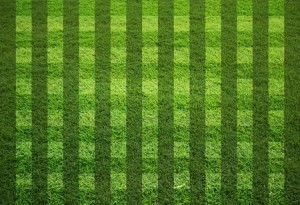A while ago we brought you the talents of Uriel Osorio at Shafer Wineries in California; a man who had taught himself how to create grassy art with a lawnmower and some inspiration and whose “grassterpieces” were bringing a smile to the faces of the winery employees and Facebook fans. Inspired by Osorio’s lawn mower prowess we were led on to some other fine examples of lawn mowers being used to create large and small scale artworks.
Thank you for reading this post, don't forget to subscribe!
The ubiquitous maize maze that seems to be a part of every rural attraction first came into being in America, where Pennsylvanian farmer Don Frantz decided to create a large scale maze, inspired by the hedge mazes that have been popular in Europe for centuries. He cut the first maize maze in the early 1990s as a way of attracting visitors to his farm, and the idea has spread far and wide since then. Using a lawn mower or a commercial tractor attachment farmers must cut the first pattern in July, having sown the seeds in May. As the corn is not too tall at this stage a riding lawn mower is more than capable of cutting the pattern, but this process must be repeated until the corn stops growing, resulting in tall walls of corn and bare paths where the maze is located.
Before GPS technology was widely available farmers had to trace a design onto a hand drawn map of their field before following this carefully to create the maze. With the widespread availability of GPS tracking and remote controlled camera drones a farmer can accurately map out the design, and check it is all going to plan with a birds eye view, so more complex designs are achievable. Check out your nearest Maize Maze and while you’re trying to find your way out, take a moment to appreciate the weeks of work that have gone into creating it.
GPS technology features once again with this set of grassterpieces created by artist Jeremy Wood with the help of a riding lawn mower fitted with GPS tracking. The tracking data creates some abstract patterns that, when put side by side chronologically, reveal a lot about how lawn mowing habits change through the seasons, and invite the viewer to speculate on what garden features cause which patterns. Wood has spent nine years riding a lawn mower around his mother’s lawn to create his artworks and has even applied this technique to GPS track his own journeys around the globe in a much larger form of digital painting. It’s certainly one of the more creative excuses for mowing the lawn we have ever come across.

Lastly, although perhaps not in the same league as Osorio and Wood, mowing stripes into your lawn is the closest most of us get to lawn mower art, and we have some tips for getting that crisp finish from your regular lawn mower. The stripe effect is created by bending the grass blades in a certain direction, so when viewed from any angle the light either reflects off the tip of the blade, resulting in a pale, light stripe, or off the length of the blade, giving a darker stripe. Mowing a square or diagonal chess board pattern involves mowing the grass in four directions, whereas a simple stripe only requires two. You can buy special rollers for this, but with some strong chains and a heavy doormat attached to the back of the mower you can achieve the same finish; all you need is something heavy enough to flatten the grass and keep it there. It is also important not to cut the grass too short or it won’t lie flat in any direction, so why not give it a practice run on the first few cuts of the season, and by the height of summer you will be a dab hand at creating that perfect stripe.
